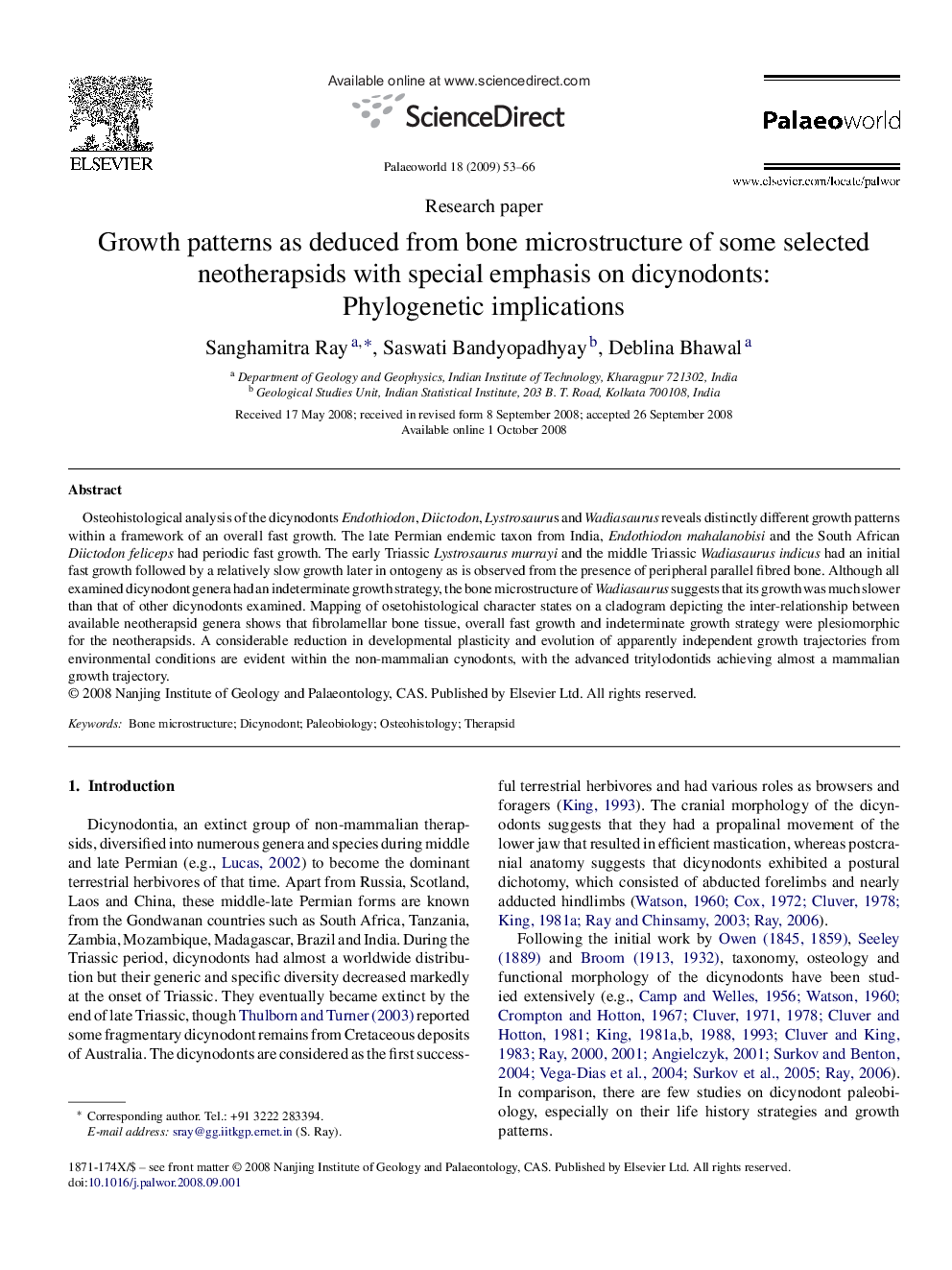| Article ID | Journal | Published Year | Pages | File Type |
|---|---|---|---|---|
| 4749800 | Palaeoworld | 2009 | 14 Pages |
Osteohistological analysis of the dicynodonts Endothiodon, Diictodon, Lystrosaurus and Wadiasaurus reveals distinctly different growth patterns within a framework of an overall fast growth. The late Permian endemic taxon from India, Endothiodon mahalanobisi and the South African Diictodon feliceps had periodic fast growth. The early Triassic Lystrosaurus murrayi and the middle Triassic Wadiasaurus indicus had an initial fast growth followed by a relatively slow growth later in ontogeny as is observed from the presence of peripheral parallel fibred bone. Although all examined dicynodont genera had an indeterminate growth strategy, the bone microstructure of Wadiasaurus suggests that its growth was much slower than that of other dicynodonts examined. Mapping of osetohistological character states on a cladogram depicting the inter-relationship between available neotherapsid genera shows that fibrolamellar bone tissue, overall fast growth and indeterminate growth strategy were plesiomorphic for the neotherapsids. A considerable reduction in developmental plasticity and evolution of apparently independent growth trajectories from environmental conditions are evident within the non-mammalian cynodonts, with the advanced tritylodontids achieving almost a mammalian growth trajectory.
